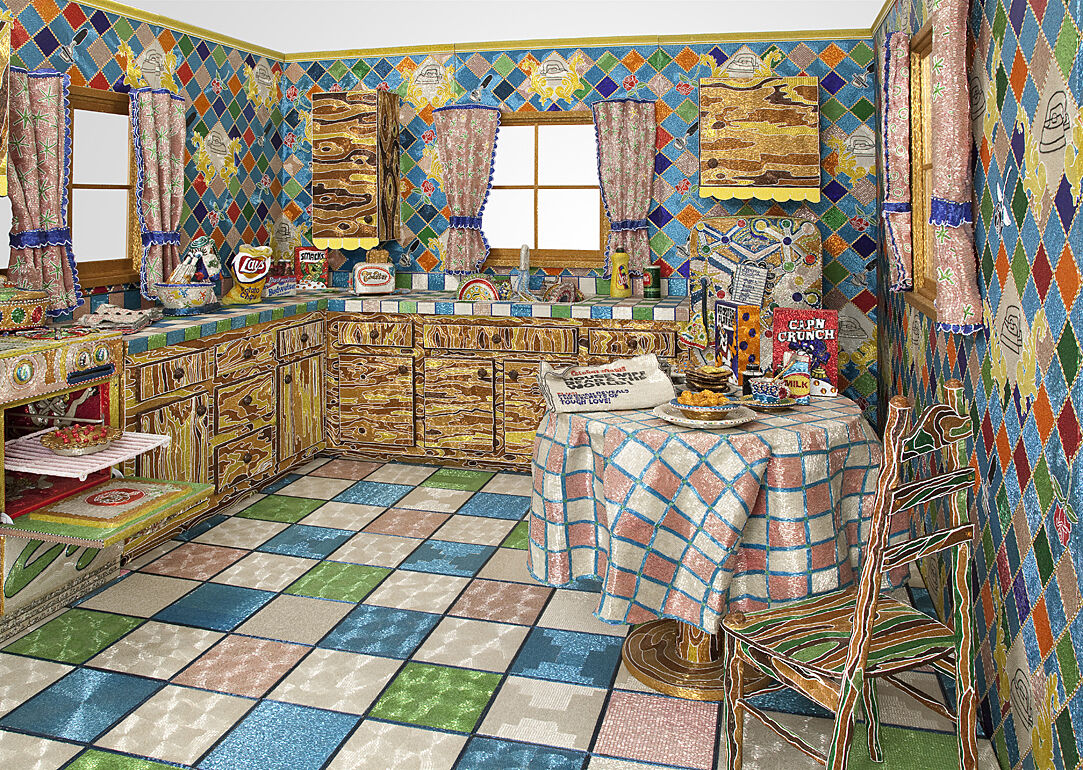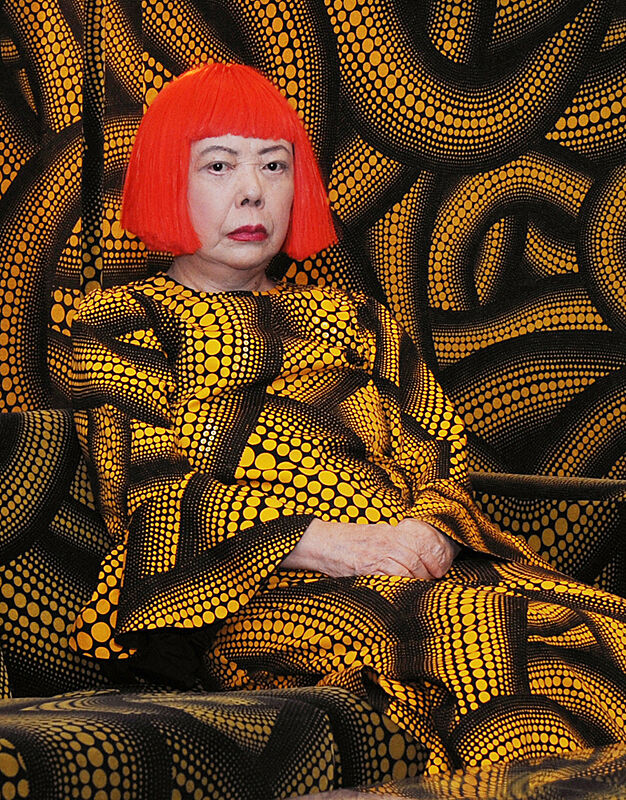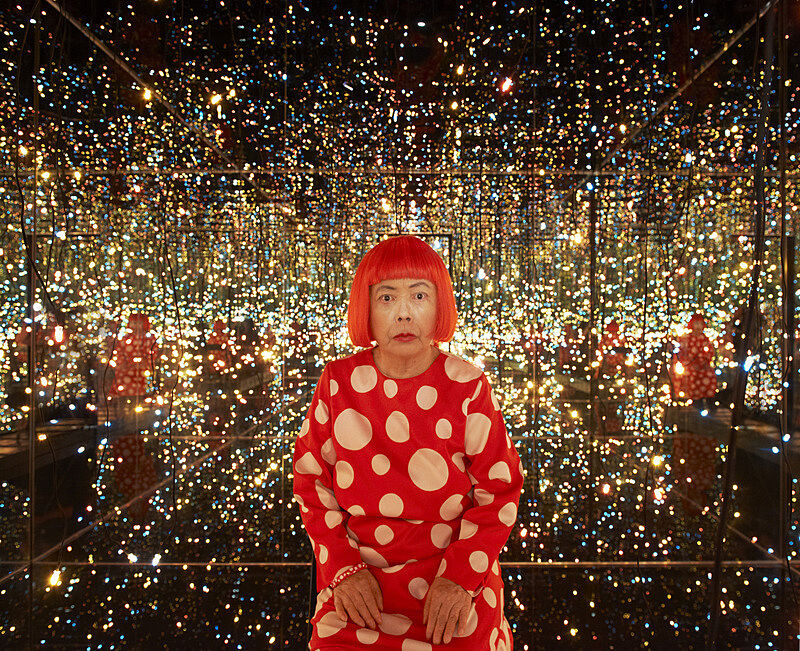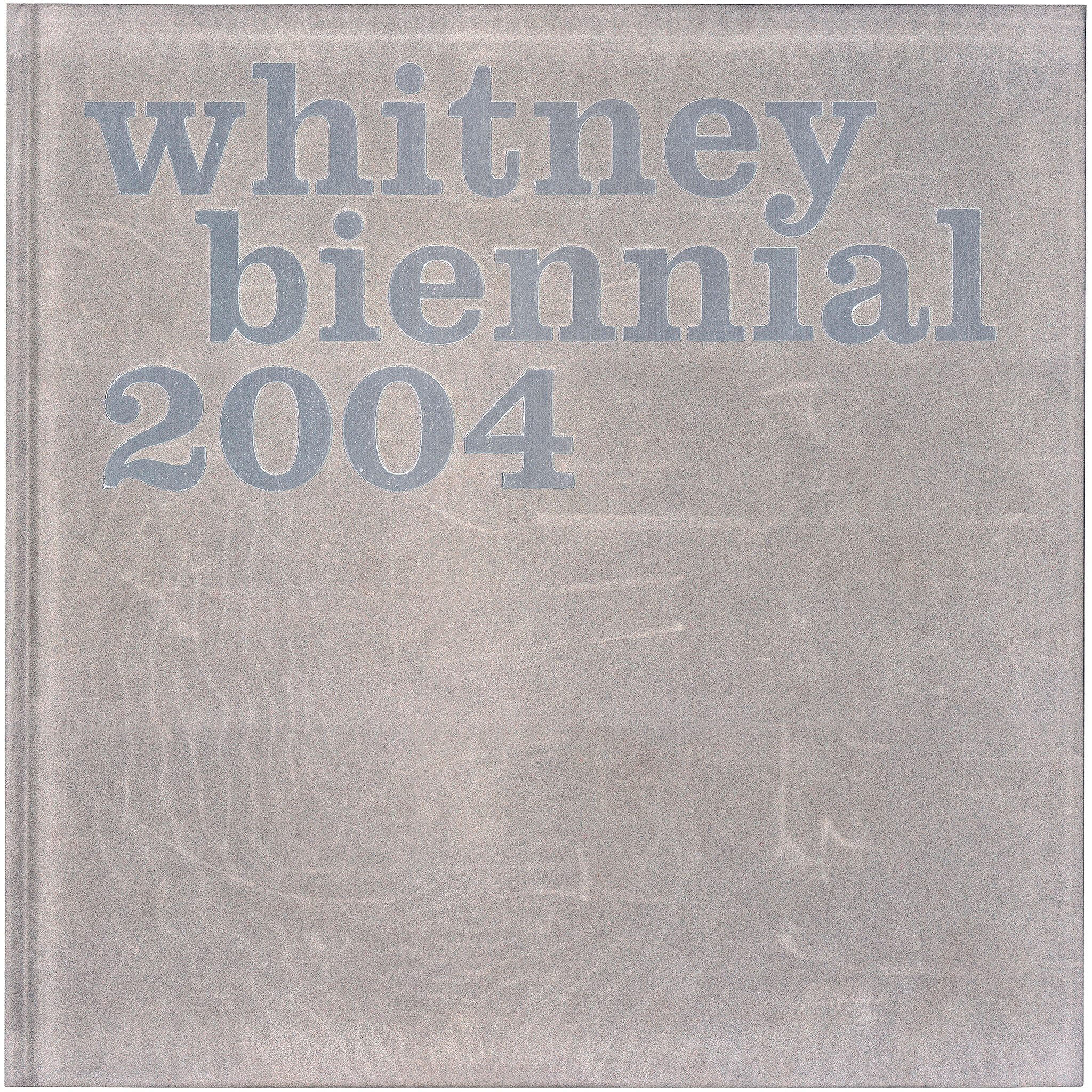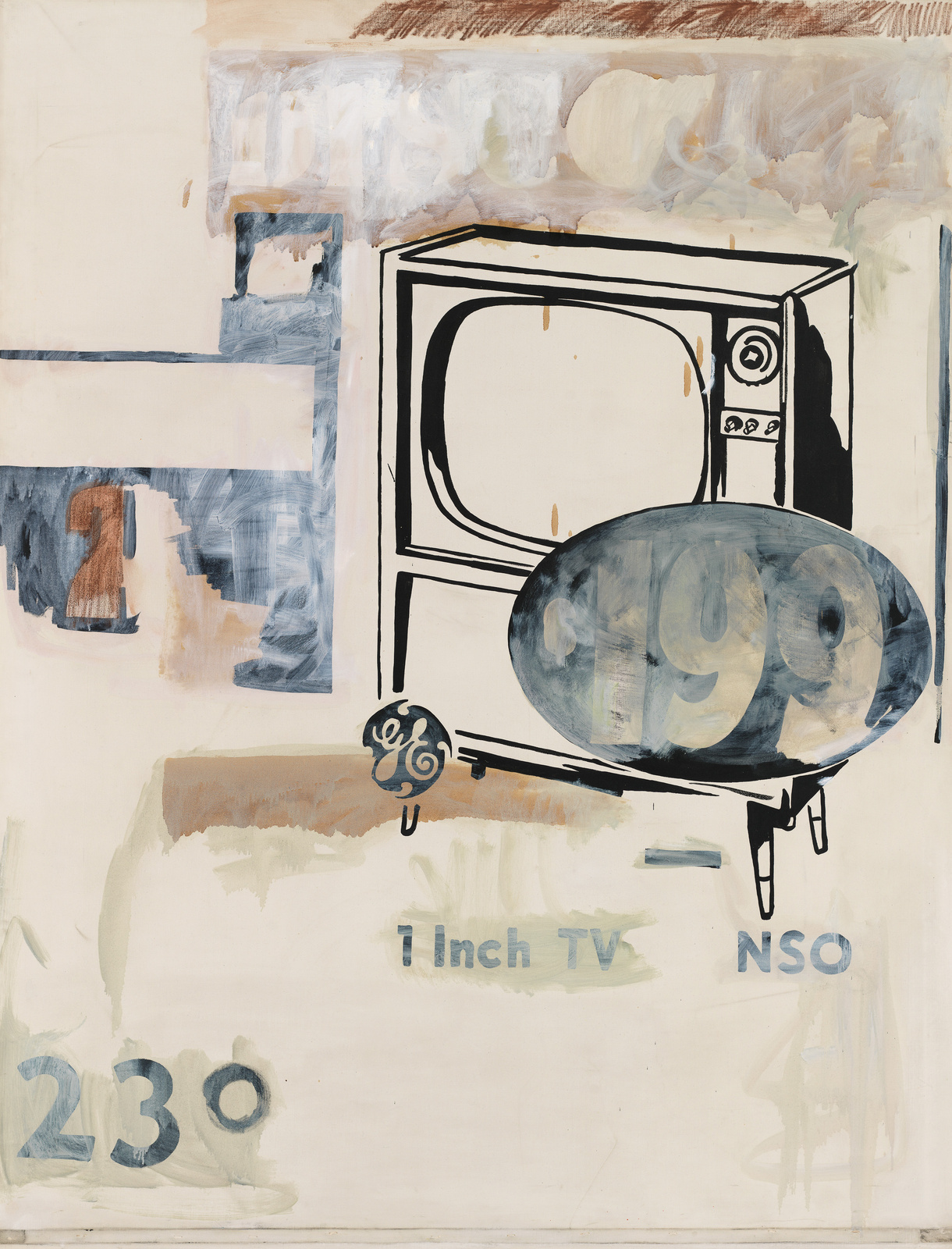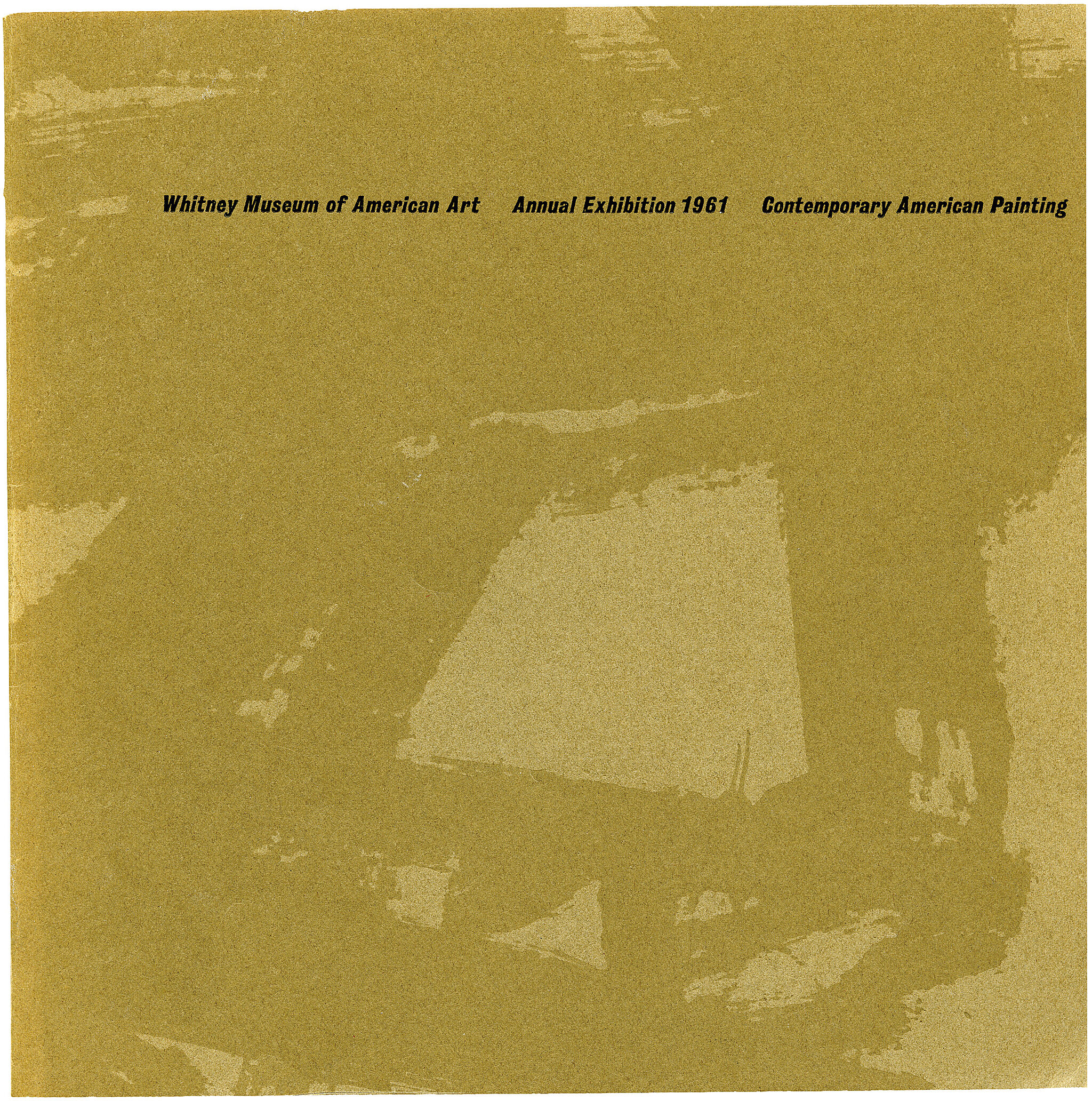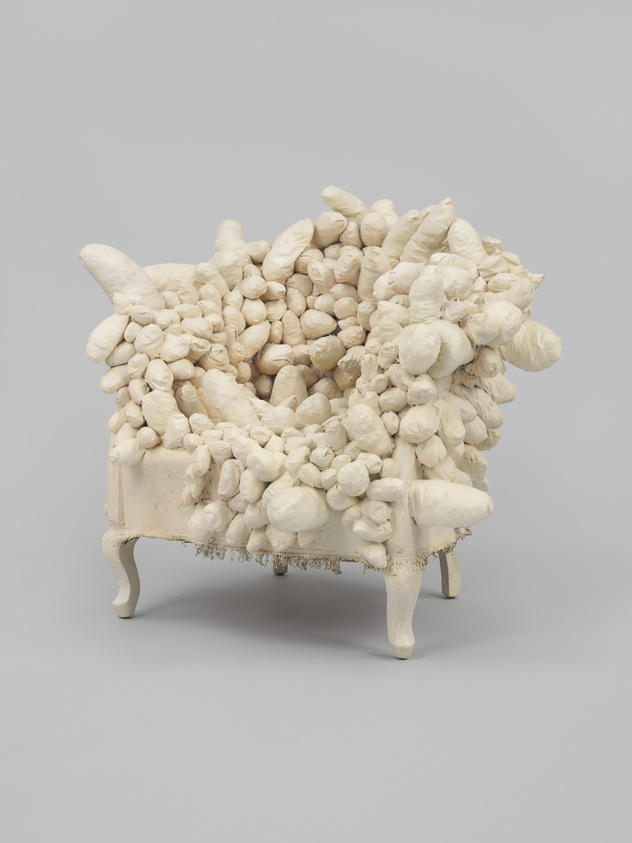Yayoi Kusama
1929–
Best known for her obsessive use of pattern and her immersive, large-scale environments, Yayoi Kusama has produced a diverse and distinctive body of work that encompasses painting, sculpture, drawing, collage, performance, film, and installation art. Kusama moved to the United States from her native Japan in 1957, and her series of Infinity Net paintings—large canvases with endlessly repeated brushstrokes that anticipated the serial techniques of Minimalism and Conceptual art—catapulted her to the forefront of the 1960s New York avant-garde. Out of this practice grew a series of sculptures that feature everyday items she covered with similarly obsessional proliferations of repeated forms—what she called her “Accumulations,” or sometimes “Compulsion Furniture.” Although often exhibited alongside works by artists such as Andy Warhol and Claes Oldenburg, these sculptures distinguished themselves from their Pop art counterparts through their otherworldly quality and their connection with the artist’s childhood traumas and hallucinatory visions.
For the “Accumulation” sculptures she began in 1961, Kusama roamed the streets of New York collecting outcast items—a sofa, a ladder, shoes, even a baby carriage and ironing board—that she covered with cotton-stuffed, white fabric forms she unabashedly identified as penises. The mass of soft-sculpture phallic forms that cover the curvaceous white-painted armchair in Accumulation, at once alarming and absurd, reflects Kusama’s efforts to face her sexual anxieties, creating a kind of self-induced exposure therapy: “Reproducing the objects, again and again,” she has said, “was my way of conquering the fear.”
Dana Miller and Adam D. Weinberg, Handbook of the Collection (New York: Whitney Museum of American Art, 2015), 214.
Introduction
Yayoi Kusama (草間 彌生, Kusama Yayoi, born 22 March 1929) is a Japanese contemporary artist who works primarily in sculpture and installation, and is also active in painting, performance, video art, fashion, poetry, fiction, and other arts. Her work is based in conceptual art and shows some attributes of feminism, minimalism, surrealism, Art Brut, pop art, and abstract expressionism, and is infused with autobiographical, psychological, and sexual content. She has been acknowledged as one of the most important living artists to come out of Japan, the world's top-selling female artist, and the world's most successful living artist. Her work influenced that of her contemporaries, including Andy Warhol and Claes Oldenburg.
Kusama was raised in Matsumoto, and trained at the Kyoto City University of Arts for a year in a traditional Japanese painting style called nihonga. She was inspired by American Abstract impressionism. She moved to New York City in 1958 and was a part of the New York avant-garde scene throughout the 1960s, especially in the pop-art movement. Embracing the rise of the hippie counterculture of the late 1960s, she came to public attention when she organized a series of happenings in which naked participants were painted with brightly coloured polka dots. She experienced a period in the 70s during which her work was largely forgotten, but a revival of interest in the 1980s brought her art back into public view. Kusama has continued to create art in various museums around the world, from the 1950s through the 2020s.
Kusama has been open about her mental health and has resided since the 1970s in a mental health facility which she leaves daily to walk to her nearby studio to work. She says that art has become her way to express her mental problems. "I fight pain, anxiety, and fear every day, and the only method I have found that relieved my illness is to keep creating art," she told an interviewer in 2012. "I followed the thread of art and somehow discovered a path that would allow me to live."
Wikidata identifier
Q231121
Information from Wikipedia, made available under the Creative Commons Attribution-ShareAlike License. Accessed October 28, 2024.
Introduction
Kusama is known for her varied practice that includes painting, sculpture and room-sized installations. She moved to the US 1957, settling in New York City, and produced paintings influenced by abstract expressionism. She was active in New York in the 1960s creating sculpture and installations, and producing happenings.
Country of birth
Japan
Roles
Artist, author, collagist, installation artist, painter, performance artist, photographer, sculptor, video artist, writer
ULAN identifier
500122518
Names
Yayoi Kusama, Yayoi Nusama, 草間弥生, 草間彌生
Information from the Getty Research Institute's Union List of Artist Names ® (ULAN), made available under the ODC Attribution License. Accessed October 28, 2024.

